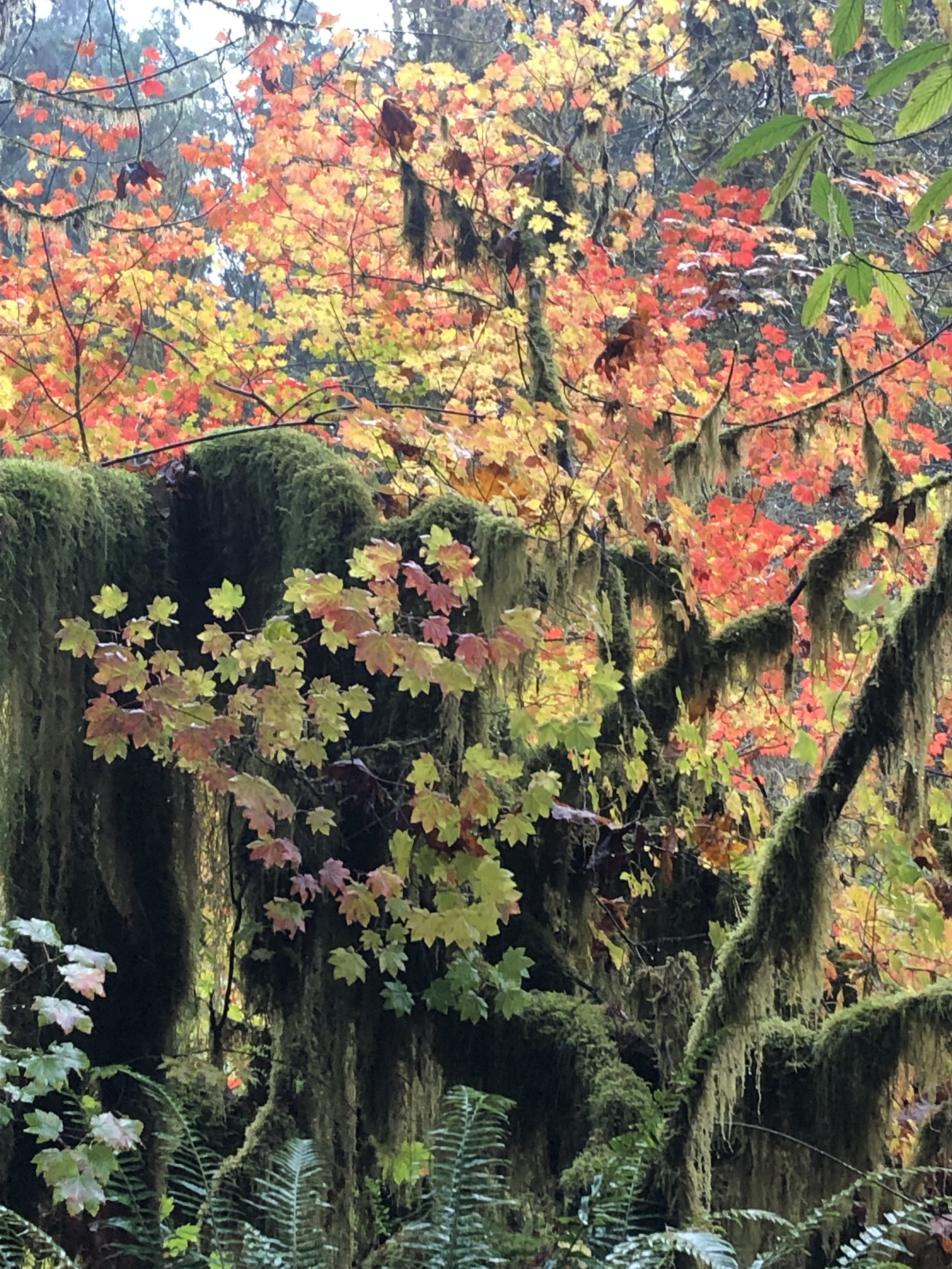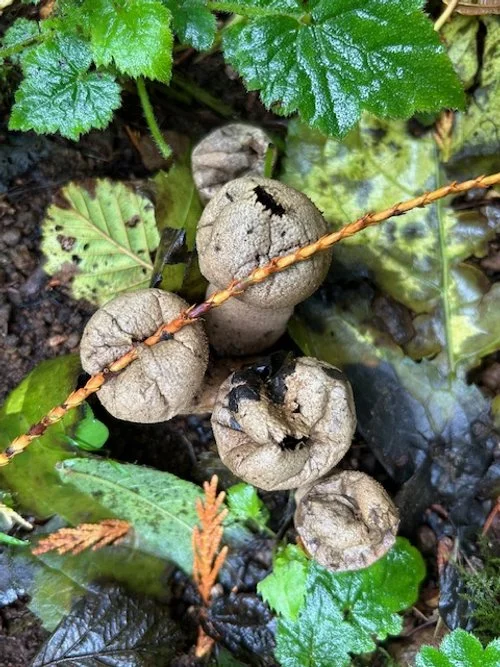Drift into fall at Drift Creek


Story & photos by Michael Edwards
For the TODAY
Standing ankle-deep on a gravel bar in the middle of North Creek, an American dipper surveys her tea-hued haunt. The slate-gray swimming songbird bobs her tail, flashes her white eyelids and dives into the frothing current. Seconds later, she saunters out of the swift-flowing water onto a boulder, a stonefly larva clamped in her beak. Again, the dipper bobs, blinks and takes off. Her stubby wings mean that her flight, unlike the flights of the swallows forming invisible figure eights through gnat swarms above her, is less about play than about practicality. The dipper beats the air into submission and then sticks the landing on a spruce root dangling over the creek. Underneath the dipper’s perch, a salmon rests in the dark depths of the creek.
The culvert bored underneath Forest Service Road 1790 in 2019 provides unfettered access for salmon to 16 miles of formerly blocked spawning beds. The female salmon uses her body and tail to create a series of depressions, or redds, in the creek’s gravel beds, into which she deposits hundreds of eggs. The cold current pushes the agitated gravel downstream where it settles on top of the eggs. If you visit North Creek in November, park by the culvert and scramble down to the creek bank. If you are patient, there’s a good chance you’ll witness a monster Chinook taking her final journey.
In the mid ’90s, to protect the northern spotted owl’s old growth habitat, the Siuslaw National Forest was designated as a Late Successional Reserve. The designation allows for thinning of overgrown tree plantations but prohibits logging in the ancient forest. In the decades since, scientists have discovered that the old, wet forest of the Pacific Northwest, along with being the last holdout for northern spotted owls and spawning salmon, provide a deep carbon sink for our warming planet. Scientists have also begun to decipher old forests’ complex communication networks.
In her book “Finding The Mother Tree: Discovering the Wisdom of the Forest,” Suzanne Simard, professor of forest ecology at the University of British Columbia, cites her scientific studies that show how “mother trees,” the biggest and oldest trees in the forest, use their root systems and mycorrhizal fungi networks to act as hubs for the distribution of nutrients and information to the surrounding trees.
Professor Simard’s scientific conclusions stress that although competition between organisms is a central tenet of the natural world, so too is cooperation.
Although visitors to Drift Creek Camp won’t be aided by maps tracing the forest’s subterranean mycorrhizal networks, it's pretty clear which trees are the mother trees.
Hikers who walk the unmarked trail that begins and ends at the big culvert will pass big-leaf maples draped in electric green moss and centuries-old fir, red cedar, hemlock and spruce. Careful observers will uncover an array of alien-looking fungi, some of which are unique to the old growth temperate rainforest. At the high elevation point of the trail, where the path turns back to the culvert, there is a log lying underneath a towering Douglas fir. This is the spot to eat your pulverized peanut butter and jelly sandwich and ingest a few mega raindrops.
Finally, if you smell something skunky and there’s no smoke and no skunk, leave your sandwich on the log and beat feet. Sasquatch will appreciate your PB&J toll.
Directions to Drift Creek Camp: Heading south on Highway 101 from Lincoln City turn left on South Drift Creek Road. At 1.6 miles stay right to stay on South Drift Creek Road. At 0.4 miles make a slight left onto South Drift Creek Camp Road. This well-maintained gravel road will take you the 7.7 miles to the Drift Creek Mennonite Camp where there are several short, marked trails. If you would rather explore a less developed, quieter part of Drift Creek Camp, park next to the giant culvert and follow the trail along the creek. This trail gradually gains elevation and then loops back to the culvert.
• Visit Bob’s Beach Books in Lincoln City and pick up a copy of Professor Suzanne Simard’s, “Finding The Mother Tree Discovering the Wisdom of the Forest.” If you prefer fiction, the character Patricia Westerford in Richard Powers’ Pulitzer Prize-winning book, “The Overstory,” bears a striking resemblance to Professor Simard.
